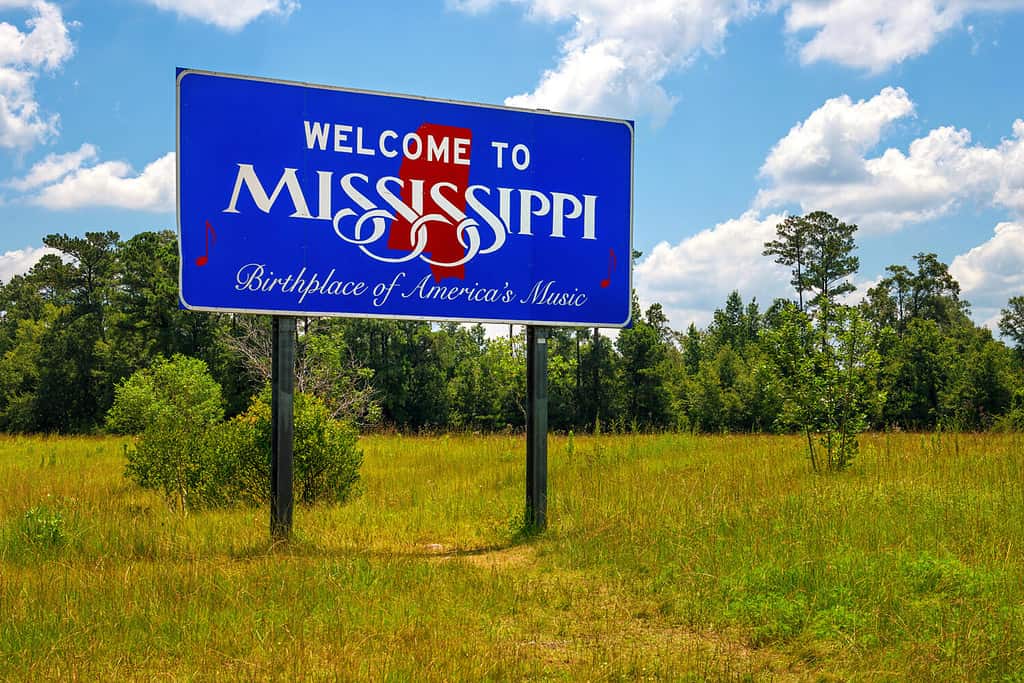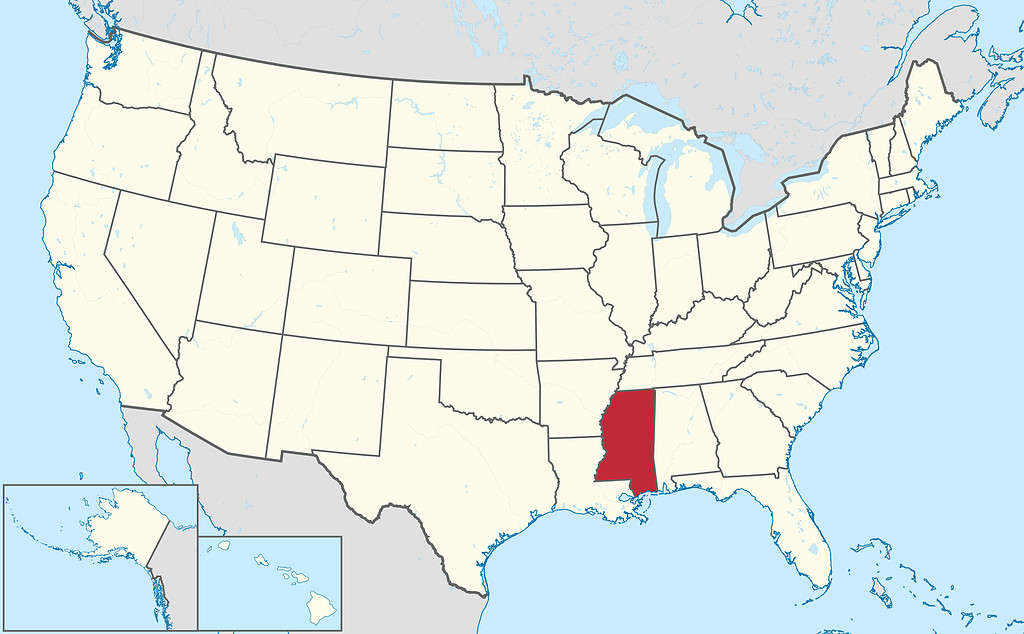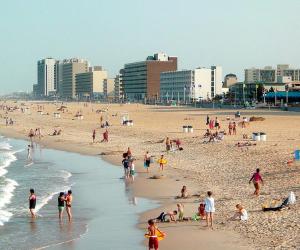Discover the Poorest Town in Mississippi
Key Points:
- 53 percent of people live below the poverty line in Rosedale, Mississippi.
- Mississippi is the poorest state in the United States of America.
- Other towns and cities compete for the poorest in Mississippi, and it changes all the time.

©Ingo70/Shutterstock.com
Mississippi is the poorest state in America. Most of the data in this story are five-year estimates from the U.S. Census Bureau’s 2021 American Community Survey.
Mississippi had a poverty rate of 19.1% as of July 2022, according to the U.S. Census Bureau. After Mississippi, Louisiana is the second-poorest state, followed by New Mexico. In Louisiana, about 18.6% of people live below the poverty line. And 17.6% of New Mexico’s residents live below the poverty line.
The median household income in Mississippi is about $49,000, compared to about $74,580 nationwide. So, what are some of the reasons for Mississippi’s prevalent poverty?
Mississippi faces challenges in its education system. These include lower levels of educational attainment and limited access to quality education in some areas. Basically, a well-educated workforce is often critical for economic development. Also, people in Mississippi have limited access to healthcare services and insurance coverage. This can result in health-related financial burdens for many residents, further contributing to poverty. Something else to note is that Mississippi’s economy has been historically reliant on agriculture and manufacturing, which can be susceptible to economic fluctuations. There is a limitation within the state’s economic diversity. And racial disparities have played a significant role in Mississippi’s poverty levels. Historically, there has been a legacy of racial discrimination. African-American communities have experienced higher poverty rates and reduced access to economic opportunities.
Read more to discover more about the poorest town in Mississippi.

©TUBS / CC BY-SA 3.0 – License
Within Mississippi, like in many states, the poorest town can change over time due to economic fluctuations and demographic shifts. However, the poorest town in Mississippi is currently Rosedale. The typical Mississippi household earns about $49,000 a year. In comparison, the typical household in Rosedale earns well below that – about $16,000 a year.
Before we discuss the details of the poorest town in Mississippi, we should first dive into the state of Mississippi’s economic system across its many cities. Here is a list of data regarding the five poorest cities in Mississippi.
| City Name | Population | % of Individuals Below the Poverty Line | Unemployment Rate | Median Household Income |
|---|---|---|---|---|
| 1. Yazoo City | 10,887 | 39.1% | 17.2% | $30,092 |
| 2. Clarksdale | 15,124 | 41.6% | 10.8% | $30,711 |
| 3. Columbia | 5,998 | 34.9% | 9.5% | $24,007 |
| 4. West Point | 10,148 | 31.5% | 11.3% | $31,018 |
| 5. Indianola | 9,679 | 30.8% | 13.8% | $32,043 |
What is the Poorest Town in Mississippi?
Indeed, Rosedale is the poorest town in Mississippi. It had a population of 1,915 as of the 2021 Census. Nearly 53% of its citizens were living below the poverty line. The median household income was $15,955 in 2021 and the median property value was $75,800.
The majority of people, 86% of residents, living in Rosedale are Black or African-American. In the Census, none of the households in Rosedale reported speaking a non-English language at home as their primary shared language. The average commute time in Rosedale was about 15 minutes, and most people drove alone to work.
There has been a range of challenges and economic disparities in Rosedale, Mississippi. This is the case for many small towns in the Mississippi Delta region. The poverty rate, as noted, is much higher than the national average. The town has faced persistent challenges related to economic inequality, limited employment opportunities, and income disparities. High unemployment rates have been a persistent issue in Rosedale and the surrounding region. Agriculture has traditionally been a significant part of Rosedale’s economy, specifically, cotton, soybeans, and other crops. However, the agricultural industry often experiences economic fluctuations due to factors like weather conditions and commodity prices. These can impact the income and employment of residents. Efforts to diversify the local economy beyond agriculture have been ongoing, but progress has been slow. Diversification could help create more stable and diverse employment opportunities.
As previously mentioned, limited educational opportunities and healthcare access can also present challenges to residents. Moreover, these hurdles can leave lasting impacts on residents’ economic prospects.
Are All Residents of Roseland in Poverty?
Of course, not all of the town’s residents live in poverty. However, there is a distinct connection between low-income levels and poverty. When placed in comparison to the statewide poverty rate of 19.1%, the poverty rate of Roseland is particularly high. The small town has a 52.7% poverty rate, which means more than half of its residents live in impoverished conditions.
History of Rosedale
Despite its economic hardships, Rosedale has an interesting history. It was settled around 1838 and became one of the two county seats in 1872. European American planters developed it for cotton plantations, dependent upon enslaved laborers.
After the Civil War and emancipation, some freedmen cleared and bought land in the bottomland. And many of them became landowners before the end of the 19th century. In the early 1900s, most African Americans lost their land due to a long recession and declining economic and political conditions. Fast forward to the beginning of the early 20th century, tens of thousands of African Americans left the state as part of the Great Migration.
The Mississippi Blues Commission put a historic marker at Rosedale’s former Yazoo and Mississippi Valley Railroad depot site in 2007. This designated it as a stop on the Mississippi Blues Trail. Locals claim Robert Johnson, the legendary blues artist famous for his song, “Traveling Riverside Blues,” sold his soul to the Devil at the intersection of Mississippi Highway 1 and Mississippi Highway 8.
Several well-known people were born in or have lived in Rosedale. Travarus Bennett, a former professional basketball player, was born in Rosedale in 1979. Dennis Binder, a rhythm and blues musician and singer, best known for his song, “Long Man Blues,” was born in Rosedale in 1928. Other notable people with ties to Rosedale include Redd Holt, Cliff Meely, and Florence Warfield Sillers.
What Town in Mississippi Has the Highest Crime?
Jackson, the state’s capital and largest city, has one of the highest crime rates in Mississippi. This is typical for many capital cities across the United States, which tend to have more diverse populations and a wider range of socioeconomic conditions.
In Mississippi, your chances of becoming a victim of a violent crime are one in 394. In Jackson, however, your chances rise to one in 140.
Of course, crime rates can fluctuate over time. Specific rankings can change based on various factors and reporting methods. In Mississippi, like in other states, cities and towns with higher population densities tend to have higher reported crime rates than smaller, more rural areas. Cities like Jackson, Gulfport, and Hattiesburg have historically had higher crime rates compared to smaller towns.
Itta Bena, Mississippi, is a small town with a population of only 2,049. However, its crime rate is much higher than the national average. The violent crime rate in Itta Bena is 31.7, which is almost 40% higher than the US average of 22.7.
Gulfport and Hattiesburg, which are larger cities on the Mississippi Gulf Coast, have also had relatively higher crime rates, particularly when compared to smaller, rural towns.
Where is Rosedale Located on a Map?
Rosedale, Mississippi, is a small town located in the northwestern part of the state of Mississippi. It sits right on the border of Arkansas, 19 miles northwest of Cleveland. According to the United States Census Bureau, Rosedale has a total area of 5.5 square miles of which 5.4 square miles is land. And 0.08 square miles is water. Rosedale is situated right on the eastern side of the Mississippi River. It sits approximately midway between the mouths of the Arkansas and White rivers. These both flow into the Mississippi River from the Arkansas side.
Rosedale is a city in Bolivar County, Mississippi, United States. Two major roads intersect in Rosedale: Mississippi Highway 1 and Mississippi Highway 8. Mississippi Highway 1 is a state highway in Mississippi that runs south from U.S. Highway 49 near Lula to U.S. Highway 61 south of Cary, roughly paralleling the Mississippi River. It travels approximately 148 miles, serving Sharkey, Issaquena, Washington, Bolivar, and Coahoma Counties. Mississippi Highway 8 is an east-to-west state highway in northern Mississippi, running 168.1 miles from MS 1 in Rosedale to U.S. Route 278 northeast of Aberdeen.
The Great River Road State Park makes up a big portion of Rosedale. The Great River Road State Park is a public recreation area in the U.S. state of Mississippi located off Mississippi Highway 1 in the southwest corner of the city of Rosedale. Rosedale manages the day-use state park. The state park features boating and fishing on Perry Martin Lake as well as picnicking facilities and a playground. The damaging floods of 2011 resulted in the need to take down the park’s 75-foot-tall lookout tower. The tower offered views of the Mississippi River.









